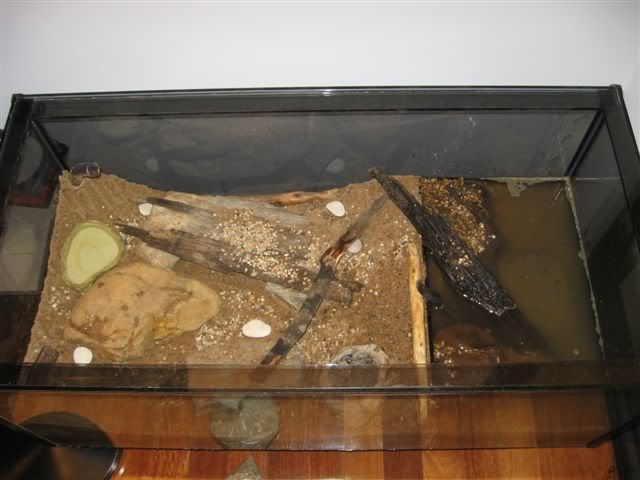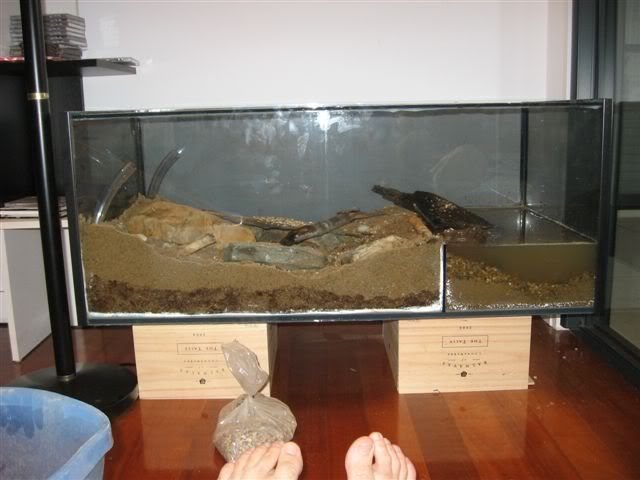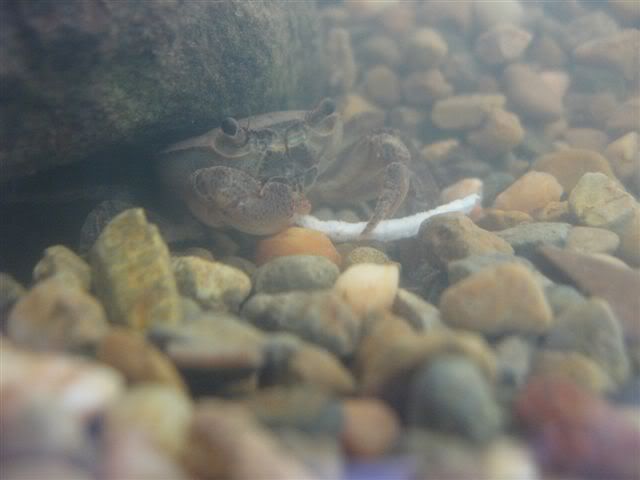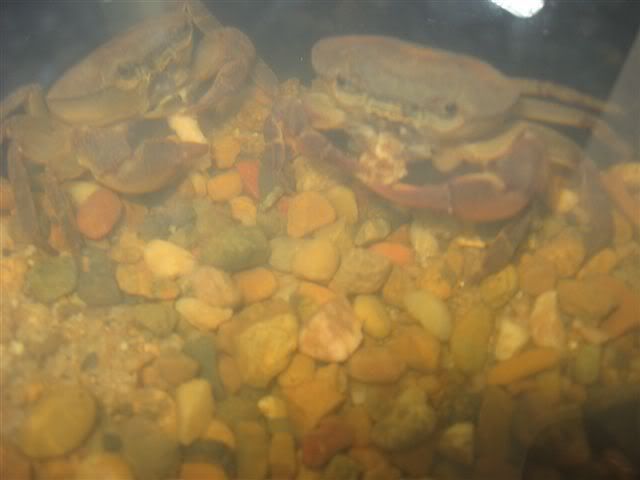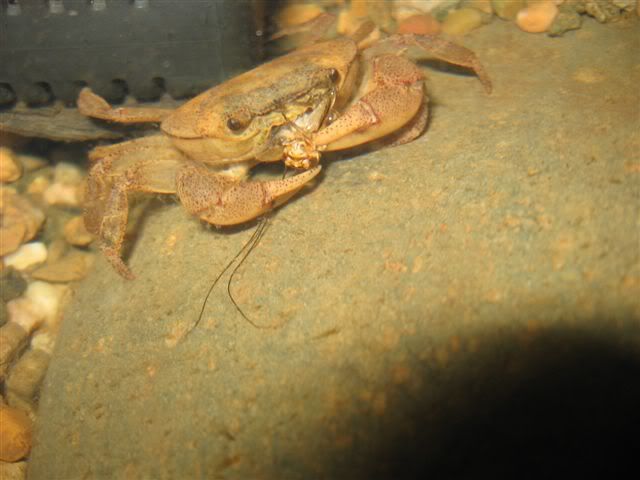That is the one! Gosh, the colour range on these is incredible. I spotted a few last week that were very nearly almost white where these are red/pink. Not sure if it relates to health, diet or environment, but it is definitely interesting.
They are on the wholesale list as "freshwater crabs" or "NT freshwater crabs". I've heard them called brown backed crabs. Strawberry crabs is new to me, but it does sound more saleable than all the others!
I fully agree with the vegetitation thing. So far Marshall's favourite hobby is eating me out of house and duckweed, which is no mean feat! He perches on his heater (preferred out-of-water possie, even though there are others available) and just shovels it in. He makes mighty short work of Java moss. On the plus side, nothing ever gets a chance to die and rot, it all gets eaten too quickly. He does still like his meaty foods (he grabs the end of my feeding dropper, shoves it in his mouth and starts chewing as I empty the contents in! It is fascinating!), but I'm thinking he is just an opportunistic carnivore.
I'm feeding one day, and giving him 2 days off, it seems to be working pretty well.
Water quality seems to be less of an issue than I'd expected. Fully cycled is a must, but because of the drought and then rain, I've held off on WCs for a few months (the ones that I did change either turned a lovely shade of green or mysteriously killed everything:() and he's doing fine. I'm sure he'd prefer a change, but he's not getting anything but small partials with spring water until I'm certain it is safe. I'm hesitant to admit it, but I'm not running a filter on his tank at the moment. The water movement seemed to upset him, and the tank is stable enough without, so I'm just doing regular substrate cleaning.
He is in with two male gambusia, but he seems to ignore them, even with his heater turned on (most times when I've heated yabbies a little over winter, they've gone super-hunter on me) which leads me to believe that his temperature tolerance is pretty high. He'll sit quite happily at anywhere between 21*C and 28*C, although he does seem to show increased activity around 27*, so I keep him just under.
Currently he is on my kitchen bench with no heater either, as I've had to shift him to avoid paint fumes. I thought he's sulk in the cold, but he seems a lot more active than when I first got him and had him unheated, so perhaps it is partially health related? Maybe he needed some food in his belly and a bit of TLC? Not sure. He'll be getting larger quarters and his heater back very shortly, so it'll be interesting to see what changes.
He hasn't moulted get, I'm not even sure what crabs do to moult

Something like yabbies I guess?
I've been contemplating getting a female too, but I've yet to sort out how territories work, and a friend of mine who got a female shortly before I got Marshall has just had her die for unknown reasons. I'm thinking that perhaps the cold temperatures played a part, but it does have me a little worried as I'm hesitant to risk this boy.
Please pop back and update if you give it another go

it is nice to have someone to share info with




